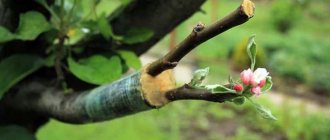This beautiful ornamental shrub delights with its lush flowering and sweet aroma. Depending on the type of lilac, its variety and design concept, the plant is used both for single planting and in small groups or as a hedge.
In this article we will talk about the intricacies of planting and caring for lilacs, so that they will delight you with their flowering for many years to come.
Where to plant lilacs
First of all, you need to choose the right place to plant. Lilac is an unpretentious crop, but does not tolerate excess humidity. In such conditions, the roots begin to rot, and even an adult shrub may die. That is why planting in swampy lowlands or areas that are regularly flooded with water is not recommended. In addition, it is not advisable to plant shrubs in the shade of large trees or close to buildings. Such a neighborhood will not only create unwanted shadow, but also increase soil moisture.
It is also recommended to choose areas with slightly acidic or neutral soils. They contain a sufficient amount of humus for the development of seedlings. When choosing a place for planting, be guided not only by the quality of the soil and its moisture content, but also by the illumination of the area. Lilac loves sunlight, but does not tolerate drafts well, so it should be planted in sunny places, but protected from strong winds.
How to choose planting material
The choice of the seedling itself plays an equally important role. When purchasing, you should pay attention to the root system: it should be strong and branched, and its diameter should be about 30 cm.
Note: It is better to buy planting material in specialized stores, and not from hand. This way you will be confident in the quality and health of the seedlings.
At the time of purchase, you can conduct a small check on the viability of the plant. You need to select a thin small root and bend it. If it breaks and darkens, it means the root has dried out and such a bush will not take root.
Figure 1. Examples of high-quality planting material with a closed root system
You can also check the quality of the seedling by the condition of its bark. If you lightly scratch it with your finger, a green mark should remain. A brown or gray surface indicates that the seedling is sick and should not be purchased.
Healthy and strong trees reach a height of half a meter or more, and also have from 3 to 6 skeletal branches (Figure 1).
When to plant lilacs
Many people mistakenly believe that the best time to plant any garden crops, including lilacs, is spring. In fact, this ornamental shrub is best planted in the ground in late summer or early autumn. In such conditions, the tree will have time to take root and grow stronger before the onset of cold weather.
But, if you bought a seedling with an open root system in the spring, and the buds have not yet bloomed on it, you can plant it at this time. The main thing is to prevent the buds from awakening, since planting during such a period can greatly weaken the shrub and even lead to its death.
Planting can also be done in mid-July, when the shrub has already bloomed and is preparing for a dormant period. But the best time is September, and it is advisable to carry out the procedure before the middle of the month, when the daytime temperature is quite high and there is no danger of night frosts.
Types and varieties
Krinum - garden flower, planting and care in open ground
Of the 30 types of lilac in garden landscaping, the following are most in demand:
- Persian lilac is an elegant medium-sized (up to 3 m) shrub of hybrid origin. Loose paniculate inflorescences, collected from fragrant light purple flowers, look very elegant against the background of dark green dense lanceolate leaves. Several forms of Persian lilac are grown in culture: white, red, dissected.
- Amur lilac is a shade-tolerant, cold-resistant beauty, reaching a height of 20 m in nature. It is found in the northeast of China and the Far East. It settles on well-moistened soils along the edges of deciduous forests. Shrubs of cultivated varieties, as a rule, do not grow higher than 10 m. The leaves of Amur lilac in the spring when blooming have a reddish tint, in the summer they delight the eye with lush greenery, and in the fall they are colored in orange-yellow and purple tones. Small cream or white flowers collected in fluffy panicles exude a pleasant sweet aroma.
- Chinese lilac is an interspecific hybrid bred in France by crossing common lilac and Persian lilac. Low (up to 5 m) shrub with long ovate-lanceolate leaves. Wide-pyramidal paniculate inflorescences are collected from large (up to 1.8 cm in diameter), very fragrant flowers of lilac or purple color. Known garden forms: pale purple, dark purple, double.
- Hungarian lilac is a branched shrub-type plant 6.5–7 m high with vertical shoots and glossy leaves. The aroma of lilac flowers, collected in sparse tiered panicles, is weakly expressed. This species is unpretentious and resistant to low temperatures. Ideal for growing in urban environments. Popular garden forms: red, pale.
- Meyer's lilac is a miniature representative of the genus, reaching a height of 1.5 m, with dark green, broadly elliptical leaves, ciliated at the edges. Small erect panicles are collected from fragrant mauve flowers.
- Hyacinth lilac is a very showy hybrid between common lilac and broadleaf lilac with heart-shaped or broadly ovate leaves that turn from dark green to purple-brown in autumn. Loose panicles are collected from pretty star-shaped flowers, similar to the flowers of common lilac. The best varieties: Churchill, Esther Staley, Public Glory.
Less common in cultivation are the following types of lilac: Japanese, Peking, drooping, Komarova, Wolf, shaggy, Juliana, Nansen and others. As for the varieties, there are so many of them and they are all so good that it can be difficult to choose the right material. I want to buy and plant them all! However, let's be realistic and name the most popular and favorite varieties of lilac: Pearl, Abundance, Red Moscow, Lebedushka, Kolkhoznitsa, Defenders of Brest, Ami Schott, Bogdan Khmelnitsky, Taras Bulba, Violetta, Buffon, Alice Harding, Andryusha Gromov, Celia, Sensation, Zhanna D'Arc, Nadezhda, Charles Joly, Congo, Vesuvius, Vestal.
Any of the mentioned representatives of the Lilac genus will be a wonderful decoration for the site, and if you want to admire the fragrant clouds for as long as possible, create a syringarium garden and plant several bushes in it that bloom at different times.
Planting in autumn
In the fall, it is advisable to complete planting before mid-September so that the seedlings have time to take root before the onset of cold weather. During this period it is still quite warm and there are no night frosts, so the risk of young plants freezing is almost minimal.
Figure 2. Stages of autumn shrub planting
The planting technology includes several stages. First, you need to clear the area of weeds and roots of other plants. Secondly, it is necessary to prepare pits with vertical walls up to 50 cm deep.
Note: If you plan to plant several bushes, it is better to place them at a distance of 2-3 meters from each other so that the roots can develop normally.
A drainage layer is placed at the bottom of the hole and filled with fertile soil consisting of compost or rotted manure (about 20 kg) per plant, 20 grams of superphosphate and a glass of wood ash. The resulting mixture must be poured into a mound, in the center of which a seedling is placed and its roots are straightened. The plant must be deepened into the soil so that its root collar is a few centimeters above the surface. Next, you need to water the soil well, and when the water is absorbed, mulch with any organic material (Figure 2).
Covering lilacs for the winter
An important element of caring for a plant in the fall and preparing it for winter is shelter. Warming is very important for young lilacs. Before mulching the soil, wipe the trunk of the bush with a rag to remove dead scales and accumulated dirt.
To prevent diseases and pests, cleaned wood is bleached.
Is it necessary to cover lilacs for the winter?
Young and transplanted bushes are not yet strong enough to withstand the winter cold, so they need to be insulated before winter. Otherwise, plant flower buds and roots located close to the surface may freeze. Mature bushes are endowed with good frost resistance, so they do not need shelter.
How to properly cover lilacs for the winter
After the temperature drops to -5 C at night, the tree trunk circle of the bush is mulched with a 10 cm layer of straw, sawdust or dry leaves. As a result of a short stay in moderate frosts without shelter, the young plant will harden and acclimatize to new weather conditions. The trunks of the trunks are wrapped in burlap folded in half.
Planting in the ground in spring
Spring is not considered the best time for this procedure, since during this period it is easy to miss the right moment for planting. It is important that the buds on the seedling do not awaken before planting, but if this has already happened, the procedure is postponed until the end of summer.
Note: It is precisely because of the chance of missing the right time for planting that it is recommended to buy seedlings with a closed root system, since they can be successfully stored for several months.
Regardless of the period, you need to properly prepare the soil: clear the area of weeds, dig it up and prepare a nutrient substrate from humus, superphosphate and wood ash.
It is also necessary to inspect the seedlings themselves and remove all damaged and dry parts of the roots. In addition, it is advisable to place the roots in a solution of a root-forming preparation for several hours to stimulate the acclimatization of the plant in a new place.
What diseases are terrible for shrubs and how to fight them?
Unfortunately, lilac, like many seedlings of fruit bushes, is susceptible to various diseases - viral, fungal, bacterial.
- If white spots appear on the foliage of the bushes, and the leaves themselves turn upward, we are talking about a viral infection. Treatment of plants with Fitoverm or Iskra will help to cope with it.
- Brown spots on the leaves, holes and powdery mildew indicate a fungal etiology of the disease. Fungicidal treatment with Fitosporin will help to cope with the fungus.
- Wilting and dried-out appearance of the bushes indicate a bacterial infection, which can be defeated by timely fertilizing with minerals and spraying with Fitosporin solution.
Bushes are also affected by insect pests - cicadas, mites, moths, weevils. The drugs “Kemifos” and “Alatar” are intended to combat insects. Spraying them will destroy insects and give the plant a blooming appearance.
Proper care of the shrub will ensure the beauty of your garden and delight the owners with lush flowering and aroma in the spring.
Lilac planting scheme
It is best to choose a cloudy day or evening time for planting seedlings. After preparing the planting material, they begin directly to gardening work.
The classic lilac planting scheme looks like this:
- Dig a hole measuring 50*50 cm.
- Nutrient soil from the hole is mixed with compost or humus, superphosphate and wood ash. In total, you will need about 20 kg of organic matter, 20 grams of mineral fertilizer and 300 grams of ash per plant. But, if the soil on the site is acidic, the amount of ash must be doubled.
- A layer of broken brick is placed at the bottom of the hole, which will act as drainage. A nutrient substrate is poured on top, forming a small mound from it.
- A prepared seedling is placed on a mound, its root system is straightened and it is deepened into the soil so that the root collar protrudes 3-4 cm above the soil surface.
- The hole is filled with soil mixture, lightly compacted and watered abundantly.
It is necessary to wait until the water is completely absorbed into the soil and mulch the bed. This will maintain optimal soil moisture and prevent weeds from growing, which significantly slow down the growth of young shrubs.
Step-by-step planting instructions are given in the video.
Distance between lilacs when planting
This ornamental shrub provides wide scope for imagination when decorating a garden. It can be planted either singly or in groups, but if you want to form strong and beautiful shrubs, it is better to maintain a distance of 2-3 meters between individual seedlings (Figure 3).
Figure 3. Distance between lilac bushes when planting
In some cases, they even create hedges from lilacs, but in this case the plants will need more careful feeding. If you have the opportunity to maintain the optimal distance between plants, you won’t have to actively fertilize the lilac, since it will receive all the necessary nutrients from the soil.
Bouquet planting
This method of placing shrubs is practiced quite rarely. The fact is that during bouquet planting, the seedlings are located very close to each other, sometimes in the same hole. This allows you to create lush plantings, but caring for mature bushes will be difficult, especially for novice gardeners.
Figure 4. Bouquet arrangement of shrubs
In addition, when placing a bouquet, it is necessary to take into account the characteristics of the varieties. As a rule, low-growing varieties are used for this purpose (Figure 4). Tall trees cannot be planted in this way, especially in combination with low-growing species.
Planting lilacs with a closed root system
Seedlings with a closed root system have one important advantage over conventional planting material. Since such plants are sold in special pots, they can be planted at almost any time of the year: from early spring to autumn.
Most varieties are resistant to drought and cold, but do not tolerate stagnation of moisture at the roots. Therefore, you should carefully choose a planting site. It should be well lit, but at the same time closed from cold winds and drafts. In addition, it is better to choose areas with loose, fertile soil.
Note: If the soil on your site does not meet these requirements, you need to dig holes, remove the soil and replace it with a special fertile soil mixture.
The depth and diameter of the planting hole should be approximately 50 cm. It is important that the walls of the hole are vertical. It is advisable to place individual plants 2 meters apart so that they can develop a strong root system as they grow.
The bottom of the hole is filled with a nutrient soil mixture, forming a small mound from it. A seedling is placed vertically in its center, its roots are straightened and sprinkled with the remaining soil. In this case, it is important that the root collar protrudes several centimeters above the soil surface. After this, the soil around the plant must be thoroughly compacted, watered, and after moisture has been absorbed, mulched with peat or sawdust to prevent moisture evaporation and weed growth.
How and what to feed lilacs
Despite the fact that lilac is very demanding regarding soil moisture and fertility, it does not require special care. In summer, the soil is watered as it dries, using up to 30 liters of liquid per bush, and the soil is also loosened several times to remove weeds.
Feeding depends on the age of the plant. During the first two or three years, young specimens are fed only with a small amount of nitrogen fertilizers, and from the second year they begin to apply urea or ammonium nitrate (50 grams for each bush).
Phosphorus and potassium fertilizers need to be applied once every 2-3 years. They can simply be scattered over the surface of the soil, and then watered abundantly. Organic fertilizers, for example, slurry (1 part cow manure to 5 parts water), are also considered effective.
Botanical description
Lilac is a multi-stemmed deciduous shrub with a height of 2 to 8 m. Lilac trunks can reach a diameter of 20 cm. They are covered with gray or gray-brown bark, fissured on old trunks and smooth on young ones.
Lilac leaves bloom early, do not fall until frost and can reach a length of 12 cm. They are opposite, usually entire, sometimes pinnately divided. Depending on the type of lilac, the shape of the leaves can be oval, heart-shaped, ovoid, or elongated with a pointed tip. The leaf color is light or dark green. White, lilac, purple, blue, violet or pink flowers, collected in terminal drooping panicles up to 20 cm long, consist of a short bell-shaped four-toothed calyx, two stamens and a corolla with a long cylindrical tube and a flat four-parted limb. When does lilac bloom? Depending on the type of lilac, the climate of the area and the weather, flowering occurs from late April to early June. In any case, you will not miss this phenomenon: blooming lilacs will make themselves known with a subtle, delicate and very pleasant aroma. The fruit of the plant is a bivalve capsule in which several winged seeds ripen.
Under favorable conditions, lilacs live up to one hundred years. It does not require complicated care, is not afraid of frost and, along with hydrangea and mock orange, or garden jasmine, is one of the most popular ornamental shrubs.
- When and how to plant astilbe in the ground
Rules for pruning lilacs, whether it needs to be pruned
This ornamental shrub needs pruning just like other plants in the garden. But this process also has its own characteristics. For example, bushes under two years old are not pruned at all, since not all of their skeletal branches have yet formed. The formation of the crown begins only from the third year, and this process takes several years (Figure 5).
Figure 5. Formative and rejuvenating pruning of shrubs
It is better to prune in early spring, before sap flows and the buds awaken. To do this, select 5-7 strong and beautiful branches located at an equal distance from each other. The remaining shoots and root shoots are removed. Next spring, cut off half of the flowering branches. At the same time, the remaining shoots are also shortened, leaving no more than 8 buds on them. This will help form a lush and strong bush.
Note: Simultaneously with formative pruning, sanitary pruning is carried out, removing all dry or damaged branches, as well as shoots with signs of disease.
Lilac can be formed not only in the form of a bush, but also a small tree. To do this, you need to select a seedling with a vertical, straight trunk and, after planting, slightly shorten it (to the height of the trunk). As the side branches grow, skeletal shoots form, leaving 5-6 of the strongest specimens, extending to the sides. At the same time, the crown is cleared of shoots growing inward and root growth. Gradually, the skeletal branches will get stronger, and further pruning will only include sanitary measures and regular thinning of the crown.
Diseases and pests
Compared to other ornamental plants, lilac is less susceptible to diseases and pests, but, unfortunately, is not completely free from them.
Pests
Mining moth - affects the leaves, after which the bush becomes as if burned. The leaves curl into tubes and dry out. The next year, the affected plant practically does not bloom.
Acacia false scale - lays eggs that look like clusters of powdery white powder. It can seriously damage the lilac, even to the point where the plant dries out completely.
Lilac leaf mites are virtually invisible pests that suck the sap from leaves. After which the leaves become hard and brownish in color.
In order to get rid of pests, you should dig up the soil under the bush to a depth of 30 cm, without damaging the root system, and collect and burn the damaged castings.
Viral diseases
Lilacs can be affected by viruses such as chlorotic leaf spot, ring spot, ring mottle . The first signs of viral infection can be observed in early spring. Depending on the type of virus, the plant may change the color of the leaves or become covered with yellow spots; at times, a ring-shaped pattern is observed, and the edges of some leaves bend slightly upward.
Mycoplasma diseases
Sometimes the lilac branches become deformed, and the bush itself becomes dwarf, while the leaves become very small. Symptoms of mycoplasma may also include abnormal branching, premature bud break, jaundice, and chlorosis.
Fungal diseases
Lilac leaves can be damaged by various fungal diseases, which manifest themselves in the form of heterogeneous spots. Over time, the spots fall out and the leaf becomes holey. The infection spreads in rainy weather and develops with high air humidity.
The main method of combating diseases is prevention, which inhibits the development of the disease. You should purchase only healthy seedlings, collect damaged leaves in a timely manner and burn them, and periodically dig up the soil under the bushes.
Lilac propagation
There are several ways to replenish the number of plants in the garden with new planting material. For this purpose, methods of cuttings, grafting, as well as growing from seeds and cuttings are used.
Each method has its own characteristics, so let’s take a closer look at the key points of each of them.
Seeds
Seed propagation is used in specialized nurseries to obtain planting material of a certain variety. Some wild varieties are also grown using the same method.
After collecting the seeds, they are stratified for two months by wrapping them in a damp cloth and placing them in the refrigerator. Sowing is carried out in spring or autumn, and after several true leaves appear, seedlings are planted in separate containers.
Growing a full-fledged seedling from seeds is difficult, since this process takes too much time. Therefore, at home it is better to use cuttings or propagation by cuttings and grafting.
Cuttings
Despite the fact that the cutting method is considered one of the best, certain difficulties still exist during its implementation. The main difficulty is that lilac cuttings take a long time to take root, so they need to be harvested during the most active period of the bush’s life - during flowering or immediately after its completion (Figure 6).
Figure 6. Stages of crop cuttings
In addition, you need to choose the right source material. To do this, choose young, non-lignified shoots located inside the crown. They should have 2-3 internodes or nodes, and it is best to cut the branches in the morning.
The lower cut of the cutting should be oblique, and the upper cut should be straight. The lower end is freed from leaves and immersed in a solution of a root-forming preparation for 16 hours. After this, the planting material is placed in a container with peat or sandy soil at such a distance that their leaves do not touch. Next, you need to spray the sprouts with water and cover with a jar. The container must be moved to the shade and periodically inspected, preventing the soil from drying out.
The first roots will appear in about 2-3 months. From this point on, you need to regularly remove the shelter for ventilation. Planting can be done in mid-summer if the sprouts have managed to form a normal root system. But, if this happened in the fall, you should leave the cuttings until spring.
You will find useful tips on cutting shrubs in the video.
Root shoots
Propagation by root shoots (offshoots) is also considered an effective method for obtaining high-quality planting material. To do this, in the spring you need to select a young shoot that has not yet become woody, and tie it with copper wire at the base and at a distance of 80 cm.
Note: When pulling a shoot, it is important not to damage its bark, as in this case the layer may not take root.
Next, the prepared branch is placed in a shallow groove (no more than 2 cm), and the top is left on the surface. To prevent the shoot from being pushed to the surface, it must be secured with pins. During the summer, the cuttings are regularly watered and weeds are removed around them (Figure 7).
Figure 7. Features of propagation by root layering
When the shoots formed on the branch reach a height of 15 cm, hilling is carried out to approximately half the height of the shoots. As the branches grow, the soil is replenished, and with the onset of cold weather, the cuttings are separated from the mother bush and cut into several parts so that each of them retains part of the roots. After this, they can be transplanted to a permanent place, but for the winter it is necessary to arrange a shelter made of pine needles.
Vaccination
Growing new planting material by grafting is a rather complex process for which the gardener needs to have certain skills. But at the same time, you can immediately obtain a large number of seedlings of the same height.
Figure 8. Features of grafting lilac onto rootstock
For grafting, cuttings or budding are used, and privet or a Hungarian variety of shrub is used as a rootstock. To do this, use the method of budding a sleeping or awakening bud (in summer or spring). In the second half of June, they begin to prepare the rootstock: remove all root shoots and shorten the side shoots so that their height does not exceed 15 cm (Figure 8).
Note: Pruning immediately before budding cannot be carried out, as the wound will not have time to heal and the seedling will be too weak.
Before vaccination, abundant watering is carried out for 5-6 days, and before the procedure, the bud attachment site is thoroughly wiped with a damp, clean cloth. A T-shaped cut up to 3 cm long is made on the rootstock at a level of 3-5 cm from the ground level, the bark is carefully lifted and a bud or cutting is inserted into the resulting hole. After this, the branch must be carefully rewound with electrical tape or film to secure it.
Care during the flowering period
Special care for lilacs is necessary during flowering. The delicate smell of the ornamental crop becomes a good bait for beetles. May beetles stick to the plant, and you only need to remove them manually.
When a crop is actively blooming, 60% of the flowering branches are removed from it. This enhances the formation of young shoots and also activates the formation of flower buds for the next season.
To make a lilac bouquet last longer, it is cut early in the morning. The cut branch is split from below. When the flowering period ends, all fading inflorescences are cut off from the plant.
When is it better to plant lilacs: in spring or autumn?
There are many opinions regarding the best time to plant lilacs. In fact, planting can be carried out from spring to autumn, but certain rules must be followed.
Firstly, if you are planning a spring planting, it must be completed before the sap begins to flow and the buds awaken.
Secondly, when planting in summer, preference should be given to mid-July. At this time, the bushes begin to prepare for the dormant period and tolerate replanting normally.
If you have chosen autumn as the planting period, it is carried out until mid-September. During this period it is still quite warm and there are no night frosts, so the seedlings will have time to take root before the onset of cold weather.











